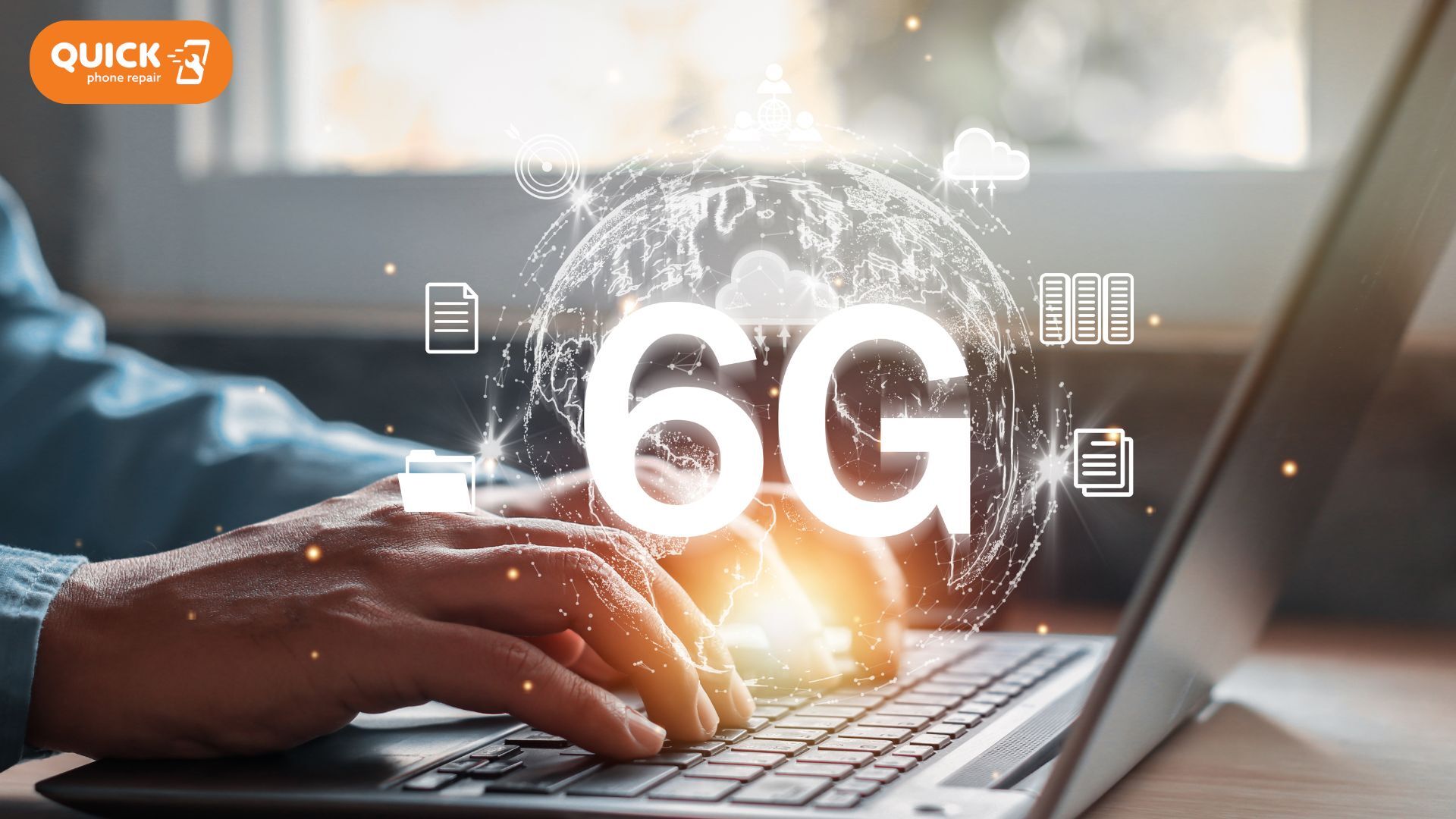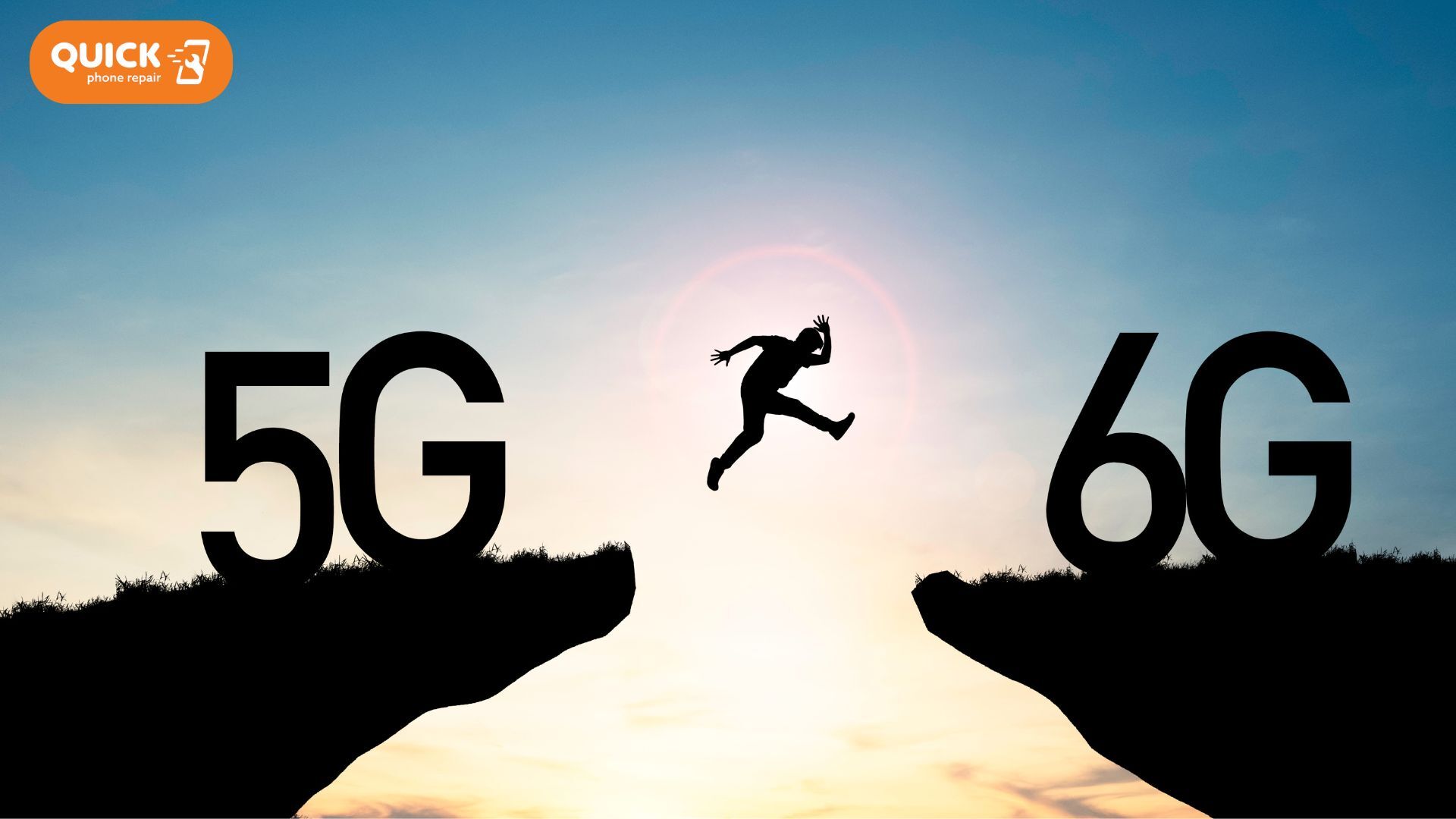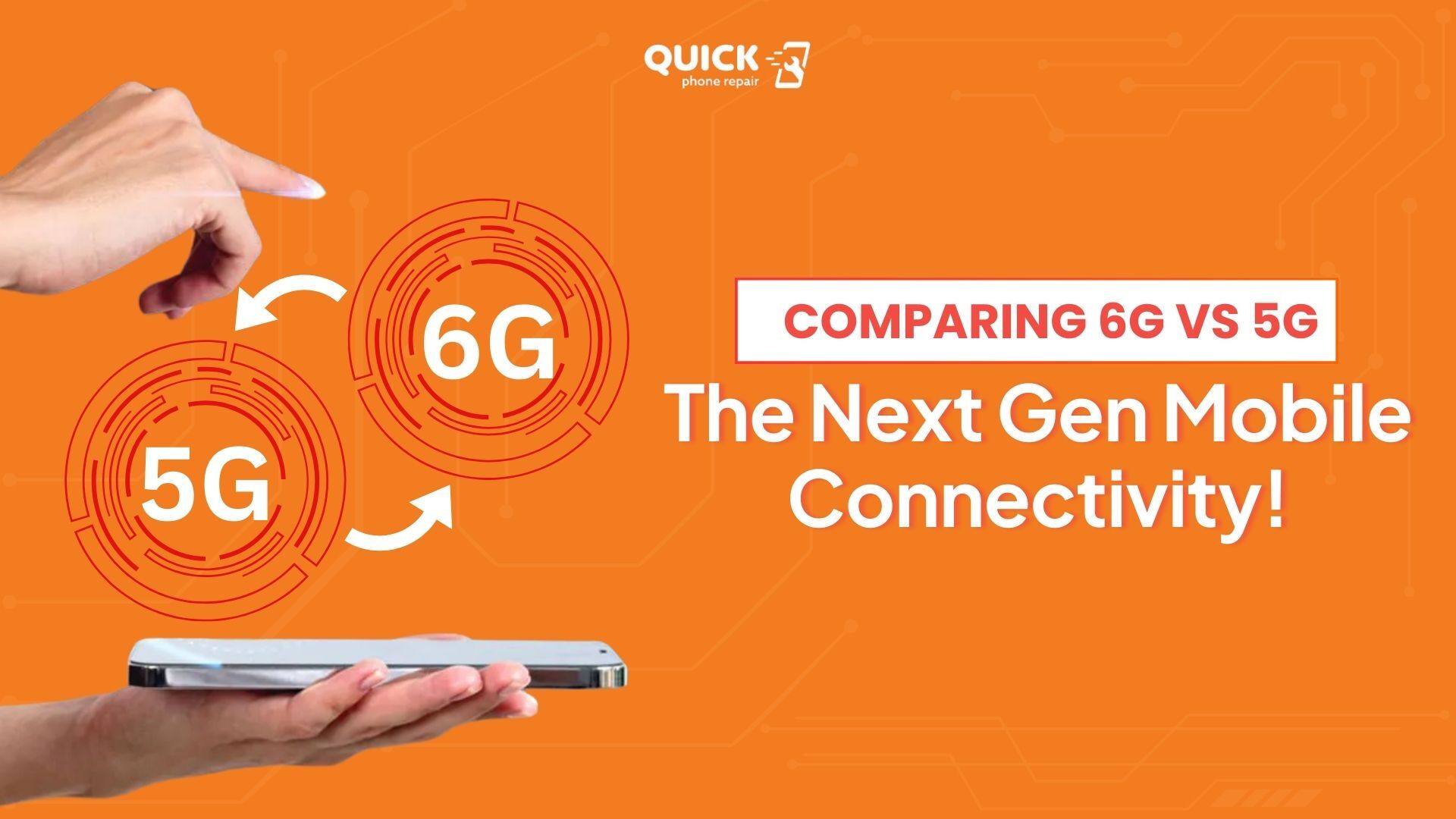Table of Contents
The rise of 6G marks a major shift in mobile connectivity. While 5G is still expanding, efforts to build 6G infrastructure are already underway. This next-gen technology promises faster speeds, ultra-low latency, and revolutionary digital experiences.
This blog evaluates the differences between 6G and 5G systems as well as their potential contributions to mobile communication technologies of the future.
Understanding 5G: The Current Revolution
A necessary basis for understanding 6G exists from examining 5G, which introduced its fifth-generation wireless technology globally during 2019. The network technology functions at two times higher speed than 4G with its peak download values at 20 Gbps. Minute communication delays are possible through this technological mechanism, which provides near-time communication.
The major benefits of 5G include:
Increased Speed:
5G networks have the ability to deliver download speeds at levels 100 times faster than 4G which leads to superior gaming playing potential, combined with quick streaming and speedy data transmission.
Low Latency:
The 1-millisecond latency threshold of 5G makes real-time remote operations more possible through its instant communication capabilities.
Massive Connectivity:
The 5G network architecture includes capabilities to connect 1 million devices inside each square kilometer thus optimizing Internet of Things (IoT) device management.

Enter 6G: What’s Next?
5G network distribution continues throughout the world while scientists start developing 6G technology. Field professionals predict 6G technology will emerge somewhere between 2030 and the following decades. Scientists forecast the evolution of 6G technology compared to its previous version.
Key Features of 6G
Terabit Speeds:
6G aims to provide download speeds 100 times faster than 5G and sets a maximum potential of 1 Tbps (terabit per second). Real-time data transfer through 6G technology will enable users to experience 16K videos and engage virtual reality without any visible delays.
Even Lower Latency:
6G technology targets a latency range between 0.1 milliseconds and even lower than 1 millisecond despite 5G already delivering 1 millisecond latency. The advancement would enable instant data interaction for intensive applications such as holographic communication and advanced AI and machine learning.
Intelligent Networks:
AI-driven networks represent a primary advancement of 6G because these networks will obtain user behavior data to produce intelligent adaptive functionality. The advanced network design of such a system will produce efficient connectivity together with improved resource management capabilities.
Full Integration of AI and Machine Learning:
6G networks will achieve better AI and Machine Learning integration thus creating AI-driven communication systems as standard operating procedures. The technology of AI will automate network decisions and improve resource management while generating advanced predictive capabilities.
Hyperconnectivity and Global Coverage:
6G technology will establish new frontiers of connectivity by extending its reach across global and terrestrial domains. The combination of earthbound links with satellite networks would make 6G technology available everywhere from any point on Earth, even beyond places where 5G struggles to connect. Trustworthy network services remain crucial for the developing countries because they currently lack dependable connectivity.
Holographic Communication and Extended Reality (XR):
6G establishes holographic communication through Extended Reality (XR) technologies to pioneer next-level virtual interaction. Through 6G technology users will experience video calls appearing as holograms in addition to full virtual reality environments.

Comparing 5G and 6G
Speed:
- Per ideal conditions, the speed potential of 5G reaches 20 Gbps.
- The speed of 6G networks will surpass 5G significantly by reaching 1 Tbps (1000 Gbps).
Latency:
- The latency of 5G reaches minimum levels of 1 millisecond.
- The latency of 6G networks will reach 0.1 milliseconds or less thus leading to an even shorter time delay.
Connectivity:
- The 5G network can simultaneously connect 1 million devices throughout each square kilometer of area.
- 6G networks will support even more devices, with the ability to deliver global, seamless connectivity.
Use Cases:
- Supports autonomous vehicles, smart cities, IoT, augmented reality (AR), and telemedicine.
- Will enable AI-based systems, holographic communication, ultra-realistic VR experiences, and high-definition remote surgeries.
Network Architecture:
- Requires the installation of small cells and new infrastructure to improve coverage and speed.
- The upcoming autonomous network systems will integrate satellite networks deeper to create a hyperconnected global network.

What Does 6G Mean for Consumers?
As an advancement for everyday digital use the basic consumer will experience fundamental changes with 6G technology. The combination of ultra-speeds and minimal delays in the networks will lead to exciting new ways to communicate and entertain and work. For example:
- Real-time Holographic Calls: 6G technology allows people to make real-time holographic calls that display human-like holographic images instead of traditional video calls.
- Immersive Virtual Reality: 6G will enable seamless VR experiences, allowing people to travel to different places without leaving home.
- Smart Everything: With enhanced IoT capabilities, almost everything will be connected—smart homes, smart cities, and intelligent transportation systems will become a standard part of daily life.
Challenges and Roadblocks for 6G
Despite its promising benefits, there are a few challenges to overcome before 6G becomes a reality. These include:
- Infrastructure: Building the necessary infrastructure to support 6G, such as satellite networks and AI-powered systems, will be costly and time-consuming.
- Security Concerns: As connectivity increases, so does the vulnerability to cyberattacks. With 6G, the need for robust security protocols will be critical.
- Regulation and Spectrum Allocation: Governments and international bodies will need to coordinate spectrum usage to ensure smooth deployment and global interoperability.

Conclusion
While 5G has already made a huge impact on the way we live, work, and play, 6G is poised to take connectivity to a whole new level. Faster speeds, ultra-low latency, and the integration of AI and holographic communication will completely transform the digital landscape. As we await the rollout of 6G in the coming years, it’s clear that this next-generation technology will shape the future in ways we can barely imagine today.
Looking for a quick phone fix or help with your device? Visit Quick Phone Repair for fast, reliable, and affordable repairs. Get back to enjoying seamless connectivity with a device that works like new!
Frequently Asked Questions
When will 6G be available?
6G is expected to be deployed around 2030, but research and development are already underway.
How will 6G affect my smartphone?
Smartphones will eventually need to be upgraded to support 6G. Expect ultra-fast speeds, immersive experiences like holograms, and new possibilities for connectivity.
What industries will benefit most from 6G?
Industries like healthcare, automotive, entertainment, and education will see significant advancements with 6G, thanks to its speed and low latency.
Will 5G still be relevant once 6G arrives?
Yes, 5G will continue to play an essential role for the next several years, but 6G will gradually take over as the primary network for global connectivity.



